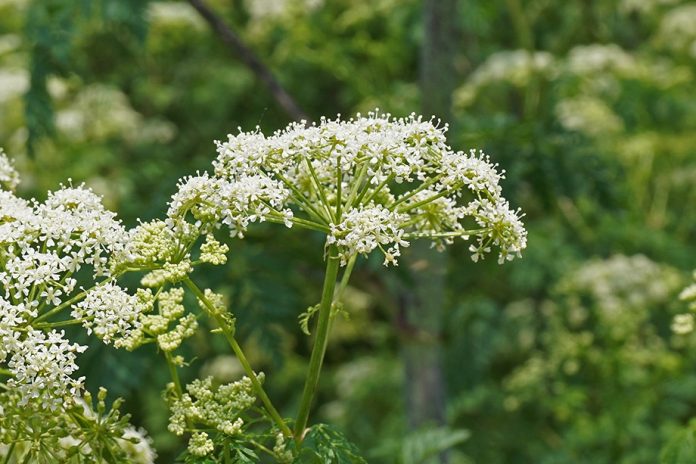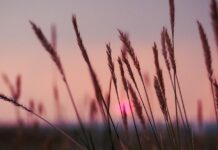Autumn is a beautiful time of year that most of us enjoy. The days are not extreme, and the evenings are typically cool and pleasant. It also rains more regularly, allowing gardens to grow more, and pastures to be more productive.
In Ohio and Pennsylvania, the predominant forages are cool season grasses; things like fescue, bluegrass, orchardgrass and perennial rye. There is a reason they call it cool season grasses. These grasses, like most of us, are more productive in spring and fall and tend to get sluggish in the summer heat.
Unfortunately, other things like the cooler, more moderate temperatures of this area. Many weeds can get a strong foothold on our pastures around these times as well. Some weeds are tolerable for livestock, but others can really hinder production and possibly be poisonous if we are not attentive to our pastures.
In this article we will focus on four: poison hemlock, spotted knapweed, common ragweed and chicory.
Hemlock
Poison hemlock is not what we typically think about in the fall. It becomes apparent in the spring and summer when we see those large, white, umbel inflorescences that look like Queen Ann’s lace, and the fern-like, large leaves. This plant, however, is a biennial, which means that it has a two-year lifecycle.
If you already treated or mowed poison hemlock down, it will probably be there next year, if you did not take care of the rosette stage in the fall, which can overwinter and survive until spring. Usually, you will find poison hemlock growing in the fence rows. Spraying the fence rows during the fall will take care of this weed so that its ugly head does not pop up in the spring.
Knapweed
Spotted knapweed is a weed that has given many farmers a headache. It is very aggressive and has low nutrient value as a forage. This means that it can quickly degrade the quality of a pasture or hayfield, leaving you with more expense and skinnier calves. Spotted knapweed is described as a flower with a color similar to red clover, but more fibrous in shape.
It blooms in the summer but has a rosette stage in the fall as well. Spotted knapweed weed is also allelopathic — it puts out chemicals that kill surrounding plants. This characteristic will make it almost impossible to smother out.
Spotted knapweed will take multiple years to eradicate from a pasture field if heavily infested, so stay persistent. The key is to prevent seed dispersal by the plant and stop its reproduction. Once detected, spotted knapweed can be controlled by mechanical pulling, if feasible. The plant is sensitive to most broadleaf herbicides.
The crucial part of chemical control is to understand the restrictions on chemicals for your operation. Dairies, for instance, have more restrictions than most beef operations. Your local extension educator can help guide you through a good plan for your operation.
Ragweed
Common ragweed is an annual weed that we typically see in the fall. Dry summers that reduce grass growth can be a time for common ragweed seeds to germinate and get a foothold on pasture fields, increasing competition with cool season forages.
One of the largest complaints farmers have with common ragweed in pastures is that it can displace grasses during major infestations. This weed is not poisonous to livestock, but is less palatable and can alter milk flavor if dairy animals graze it.
This weed is also a nuisance to the farmer if they are susceptible to ragweed allergies. Common ragweed is sensitive to most broadleaf herbicides, and avoiding overgrazing in the summer is a great way to prevent outbreaks.
Chicory
Finally, a weed that we see everywhere this time of year is wild chicory. These blue flowers seem to overtake the landscape. Wild chicory can be fibrous, and cattle might graze around it. Goats, on the other hand, will graze it with preference.
Interestingly, chicory also has many grazing varieties that are high in minerals and nutrients and could even complement a paddock, making it higher quality. Puna chicory is an example of a grazing variety. Out of the weeds discussed above, this one would be the least of my concerns.
There are many reasons to intervene in a field, whether it’s to spray a chemical, mechanically control a weed, let it rest or graze it off. Management decisions should be made at a financial level, and to mitigate future problems.
Spotted knapweed is one that will more than likely come back and only get worse. There are more weeds than time, and some are just not worth the hassle of killing. Simply altering management could be an easier and more permanent solution to most weed problems.













